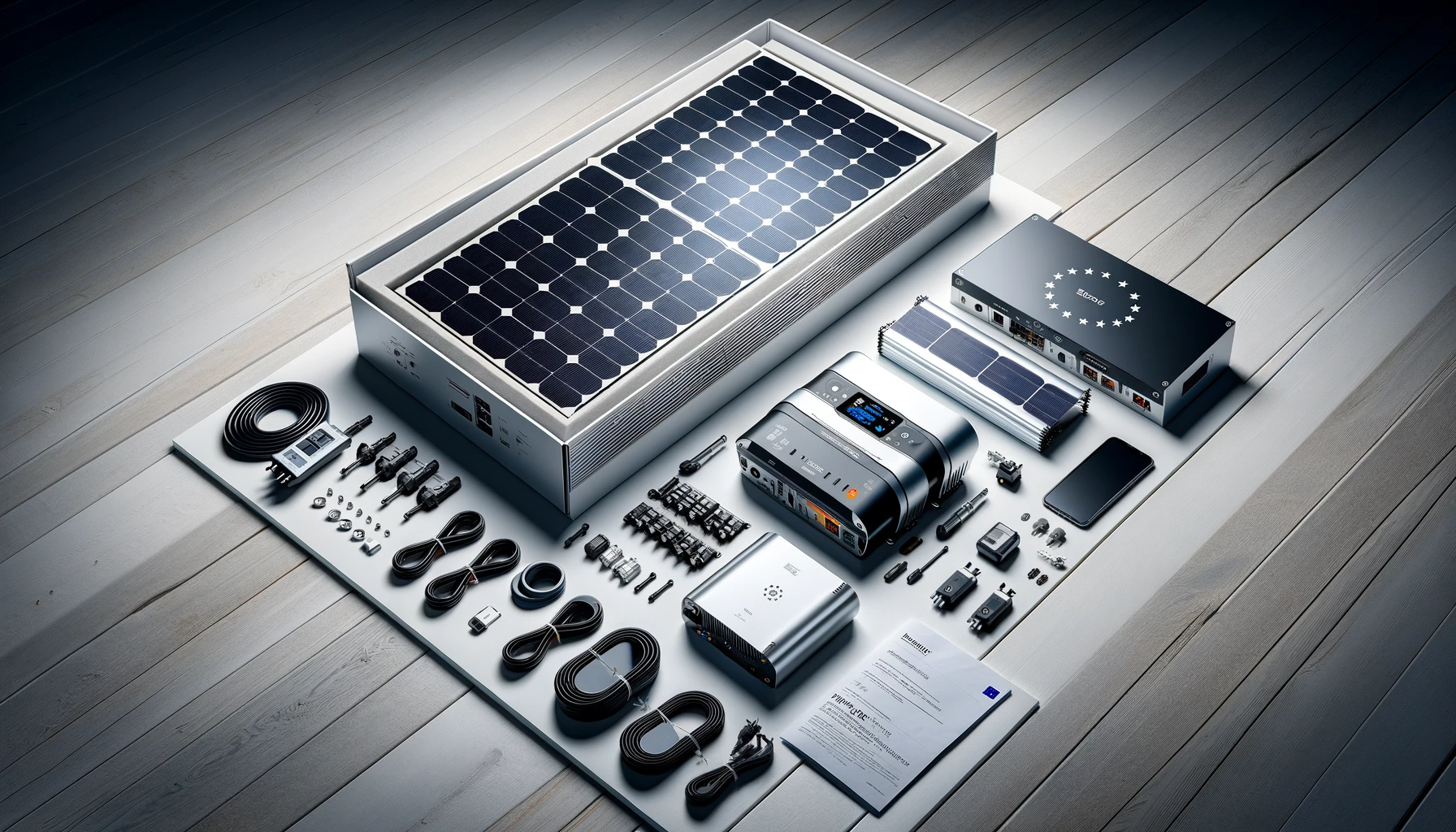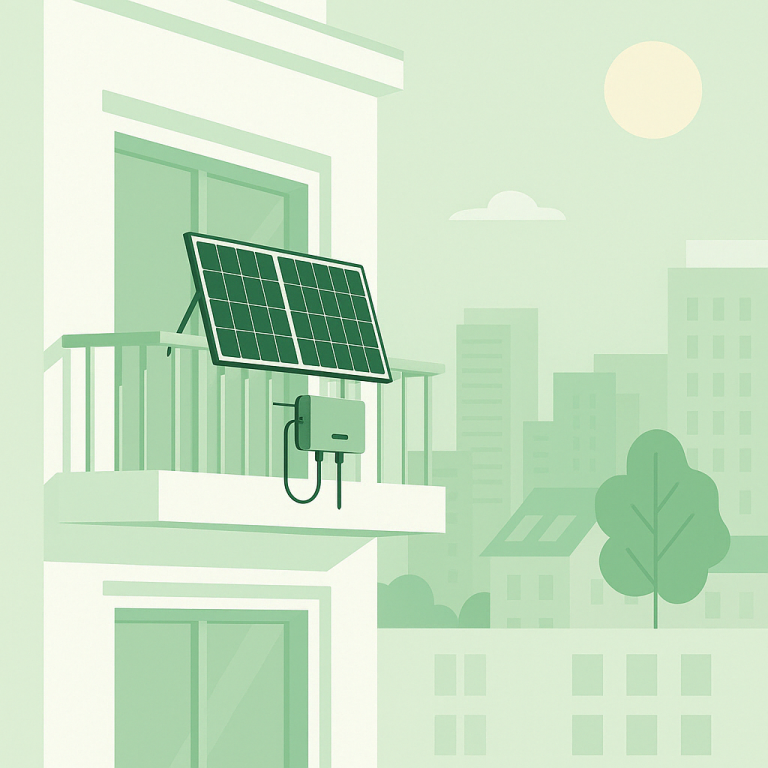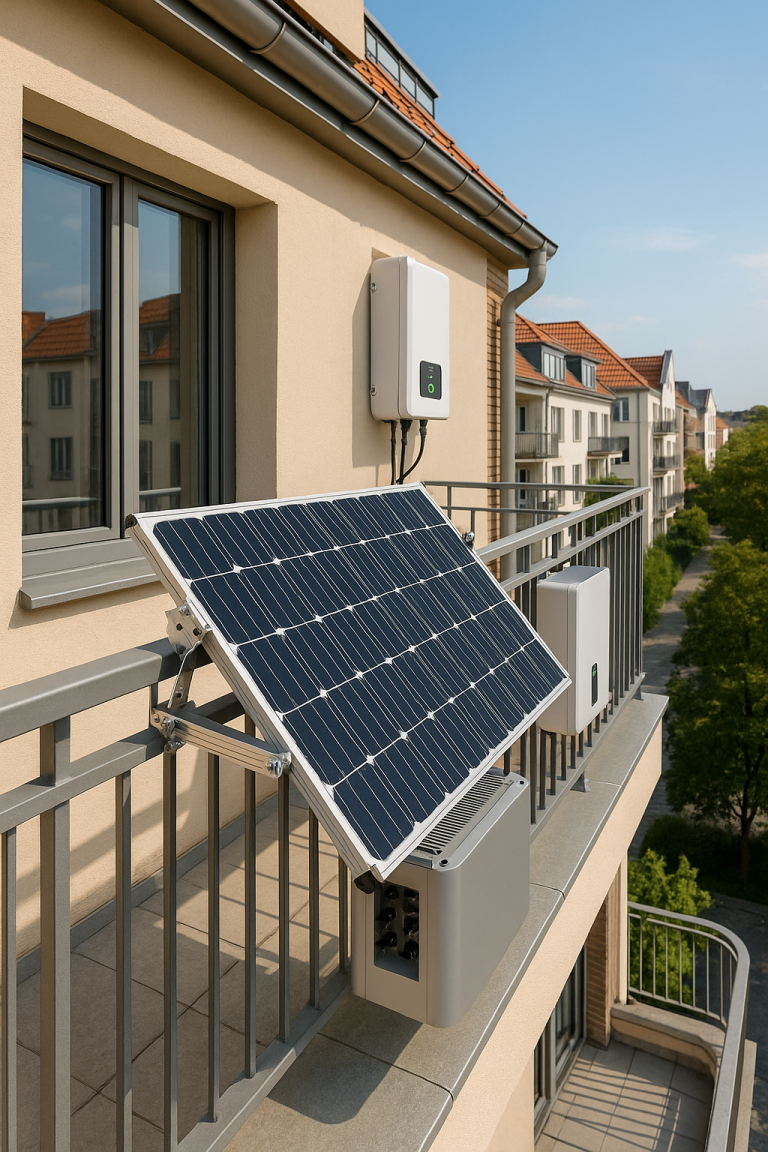1. Introduction: Why All-in-One Solar Kits Are Gaining Popularity
In the rapidly evolving world of residential and commercial solar, simplicity and speed of deployment are becoming essential. For European homeowners, landlords, and even small businesses, the demand for “plug-and-play” renewable energy is on the rise.
Enter the all-in-one solar kit — a pre-integrated solution that combines solar generation, energy conversion, and sometimes even storage, all in a neat, compact bundle. These kits eliminate the guesswork, reduce installation time, and provide a modular way to start harvesting solar energy without needing an engineering degree.
But what exactly is inside an all-in-one solar kit? And how do its components work together to deliver efficient and safe solar power?
Let’s open the box and break it down.
2. What Is an All-in-One Solar Kit?
An all-in-one solar kit is a pre-configured system that includes all the essential components needed to generate, convert, and use solar energy. It is typically designed for easy installation with minimal wiring, ideal for DIY homeowners or professional installers looking to reduce setup time.
Modern all-in-one kits are especially popular in Europe due to stricter building codes, limited balcony/roof space, and increased interest in energy independence.
Most kits include:
- Solar panels
- Hybrid or micro inverter
- Lithium (often LiFePO₄) battery
- MPPT charge controller
- Plug-and-play cable system
- Safety fuses, disconnects, and monitoring tools
✅ If you’re new to plug-and-play solar kits, check out our
3. Solar Panel: The Power Source
Solar panels are the most visible part of your kit. They’re responsible for converting sunlight into direct current (DC) electricity.
Key features to look for in the panel:
- Monocrystalline for higher efficiency
- EU-certified for fire safety and performance
- Compact sizing for balconies or small rooftops
Many all-in-one kits use 400–600W panels to align with power limits in countries like Germany and the Netherlands.
4. Inverter: The Heart of Conversion
The inverter is a critical part of the system, converting the DC power from solar panels into alternating current (AC) used by household appliances.
There are two main types:
- Micro inverters, often attached directly to panels
- Hybrid inverters, which can manage both grid and battery interaction
MPPT-equipped inverters offer maximum energy extraction by dynamically adjusting voltage and current
Look for inverters with:
- CE and VDE certification (for Germany)
- Grid export control
- Battery integration ports
5. MPPT Charge Controller: Power Optimization
Maximum Power Point Tracking (MPPT) charge controllers regulate the voltage and current from the solar panel to the battery bank, maximizing energy harvest especially in cloudy conditions.
Many modern kits have the MPPT unit integrated into the inverter. However, if it’s separate, ensure:
- It’s rated for your panel’s voltage and amperage
- It supports LiFePO₄ battery charging
- It has overvoltage and overcurrent protection
6. Battery: The Power Reserve
An increasingly popular option in European solar kits is the integration of a battery pack, often based on LiFePO₄ chemistry for safety and long cycle life.
Advantages of LiFePO₄:
- 3000–6000 charge cycles
- Stable even in cold climates (Nordic region friendly)
- Non-flammable and environmentally safer
Some all-in-one systems offer stackable batteries, making it easy to expand capacity as your energy needs grow.
7. Plug-and-Play Wiring & Safety Components
The true benefit of all-in-one kits is the cable simplicity — most components are pre-wired or use labeled quick connectors.
Kits typically include:
- AC/DC disconnects
- Circuit breakers and fuses
- MC4 connectors for solar panels
- Grounding cables and wall-mounting kits
This makes the system both safer and faster to deploy for professionals and skilled DIYers alike.
8. Monitoring System: Know Your Power
Many all-in-one kits now come with real-time monitoring via app or browser, offering insights into:
- Energy generation
- Battery state of charge
- Power consumption patterns
- Alerts for system faults
These systems may use Bluetooth, Wi-Fi, or RS485/CAN communication protocols.
Curious how BMS and data control work? Check out our
9. Who Should Buy All-in-One Solar Kits?
✅ Ideal for:
- Renters and homeowners with limited installation space
- B2B resellers who need CE-certified, ready-to-sell systems
- DIY enthusiasts looking for fast, safe solar deployment
- Small businesses wanting quick energy backup without large-scale installs
10. Final Thoughts: Compact Doesn’t Mean Compromised
All-in-one solar kits represent the future of simplified solar adoption, especially in dense urban settings across Europe. By combining safety, performance, and convenience, they reduce the barrier to solar ownership for individuals and small-scale enterprises.
Whether you’re testing the waters with a 600W system or deploying a 2kWh backup for your remote cabin, knowing what’s inside the box ensures you invest smartly, install safely, and power sustainably.
Looking for complete kits with plug-and-play wiring and certified components? Explore our full lineup at




